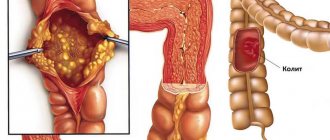Sorbents are medications that can selectively absorb and remove toxic substances from the body. Activated carbon also falls into this category. This is a spongy substance that is made from carbon-containing raw materials at temperatures of more than 1000 degrees. Every person who has ever had to take charcoal remembers that it is granules or powder of a rich black color. The chemical composition of the substance is close to graphite, but due to its porous structure it is capable of absorbing and retaining toxic substances. Activated carbon can be drunk for various types of intoxication; it can also be used in the treatment of stool disorders. Let's look at this issue in more detail.
Useful properties of activated carbon
Interestingly, coal was used for medicinal purposes back in Ancient Egypt. It perfectly binds and removes organic toxins, chloramines, metal salts and other harmful substances, but alkali and acid are an impossible task for it. The porous structure of carbon reliably holds ions with a negative charge inside, preventing them from entering the circulatory system. It is recommended to use charcoal for:
- Elimination of intoxication.
- Normalization of stool.
- Reducing the processes of rotting and fermentation in the intestines.
- If flatulence or dyspepsia is observed.
- When the secretion of gastric juice decreases.
- Relieving symptoms of dermatitis and allergies.
Activated carbon should not be taken simultaneously with other medications - it neutralizes their effect.
Contraindications and recommendations for use
Activated charcoal taken helps relieve symptoms and removes harmful substances. However, the sorbent also has negative aspects, which are explained by its chemical properties:
- Coal absorbs various molecules, including compounds beneficial to our body. The sorbent interferes with the absorption of vitamins, micro- and macroelements; long-term use depletes the body.
- Coal absorbs large amounts of moisture. If you don't consume enough water, your body will become dehydrated. This is fraught with constipation and diseases of internal organs.
Contraindications for use:
- Peptic ulcer in the acute stage.
- Bleeding.
- Atony and intestinal obstruction.
- Hemorrhoids.
- Increased sensitivity to carbon.
- Tumors of the intestines and stomach.
- Taking other sorbents.
For problems with the gastrointestinal tract (bloating, flatulence) or intoxication, charcoal is taken in the proportion of 1 tablet per 10 kilograms of weight. The duration of treatment is determined by the doctor. Other medications can be taken no earlier than an hour later.
Activated charcoal for constipation
Gastroenterologists say that uncontrolled and long-term use of coal without indications can cause constipation, hypovitaminosis and irritable bowel syndrome.
You should take activated charcoal for constipation as follows:
- To check your individual tolerance to the drug, take no more than 2 tablets.
- To improve the effect, doctors recommend first rinsing the stomach with a weak solution of potassium permanganate or a large amount of water.
- If there is no improvement within 5 hours, you need to take charcoal in a dosage of 1 tablet per 10 kilograms of weight every 3-4 hours.
- Take charcoal 1.5-2 hours after meals.
- It is not advisable to crush the tablets and swallow them dry. On the contrary, you should drink as much fluid as possible throughout the day.
- Activated carbon is not recommended to be mixed with other medications: the sorbent not only absorbs beneficial components, but also worsens intestinal dysfunction.
- To make it easier to swallow, the charcoal can be crushed and dissolved in water.
Activated carbon is considered one of the cheapest and safest sorbents. In 99% of cases, it is not capable of causing significant harm to health.
Food poisoning is not such a rare occurrence, and it can be difficult for the body to cope with intoxication without outside help. Then sorbents come to the rescue. You will find expert advice on their selection and use in this video below.
Activated carbon is an enterosorbent used in medical practice for the treatment of poisonings of varying severity. In this article we will look at whether you can drink carbon if you are constipated.
Organogen
How to take activated charcoal for diarrhea
Diarrhea often occurs due to the consumption of low-quality food. Once in the gastrointestinal tract, they release toxins to which the microflora reacts, activating the intestinal muscles. Activated carbon, once in the gastrointestinal tract, binds toxins, stops their absorption, and therefore reduces the intestinal reaction to aggressive substances. Administration for diarrhea is indicated for adults and children over 14 years of age at a dosage of 1 g per 1 kg of weight. The volume taught can be divided into three doses. It will not be a mistake to drink two charcoal tablets every hour.
What is activated carbon
In 1831, French doctors drank a fatal dose of strychnine in front of their colleagues, but survived. Medical workers mixed a deadly poison with coal.
The use of activated charcoal has a long history - the ancient Greeks and Egyptians also used charcoal to relieve symptoms of poisoning.
Activated Organogen is considered one of the most effective treatments against almost any type of toxic chemical or drug overdose. Carbon reduces toxic absorption by nearly 60 percent by binding chemicals.
Carbon is also often prescribed after gastric lavage. Gastrointestinal lavage does not counteract effects beyond the stomach. However, carbon is able to adsorb all parts of the intestine.
Carbon is a natural product that results from the charring of organic matter such as leaves, coconut, bamboo, olives, coconut shells and sawdust. Initially it is ordinary carbon, which is then activated by oxidizing gases such as water vapor or air. Carbon is made at high temperatures.
The extensive system of microscopic pores in charcoal helps trap toxic chemicals and speed their release through the digestive system. Toxic substances bind to the surface of the coal. Since it is not digested, it remains in the gastrointestinal tract along with toxic substances. Then the coal along with the substances is excreted unchanged.
Is it possible to give activated charcoal to infants?
The ability of activated carbon to relieve symptoms of flatulence by removing gases from the intestines can be used in infants suffering from intestinal pain. Colic, which occurs against the background of increased gas formation, prevents the child from sleeping, and becomes a real nightmare for young parents. A single dose for an infant should be calculated based on the proportion: 200 mg per 1 kg of body weight. Considering the standard mass of coal in 1 tablet is equal to 0.25 g, a five-kilogram child should be given 4 tablets at a time. This is inconvenient, given that charcoal produces a slight effervescence in contact with liquid. After crushing the tablets, adding a small amount of water, you can give it to the baby through a spoon. However, it is much more convenient to use other carminatives produced in the form of suspensions.
Advantages
Many people ask whether the product will help with bloating or constipation. Activated charcoal for constipation and bloating can absorb and also bind gases, especially in the lower intestine, which alleviates flatulence. In this case, the drug should be taken, if possible, before eating. If the patient suffers from bloating on a regular basis, 2-3 tablets should be used daily. It should be noted that carbon is ineffective as a laxative.
It is known that carbon can help relieve itching after insect bites. To do this, you need to mix carbon with water and apply the product to the affected area of the skin. Doctors recommend ½ teaspoon of charcoal mixed with one tablespoon of water.
Advice! If carbon has no effect on the body and the symptoms intensify, you should urgently consult a doctor to clarify the cause of the symptoms.
- Operating principle of activated carbon
- Recommendations for admission
- Contraindications for use
- Possible side effects
- Taking the drug during pregnancy
- Video on the topic
Activated charcoal for constipation (constipation) will be effective only if the disturbance in the quality of stool is functional. The sorbent is widely used after food and toxic poisoning.
Operating principle of activated carbon
Activated carbon contains only components of organic origin that have high adsorbing properties. After entering the intestines, it “captures” bacteria, toxic components that disrupt the natural process of bowel movements.
The product is recommended for use for constipation caused by the following conditions and diseases:
- development of fermentation processes in the intestinal tract due to impaired digestion;
- increased gas formation;
- bloating;
- chronic form of pancreatitis;
- •astritis and the initial stage of peptic ulcer of the stomach and duodenum.
The drug will be effective for constipation of allergic origin, as well as those caused by drug and alcohol intoxication. Activated carbon can be used to relieve constipation caused by liver diseases and accompanied by a violation of its cleansing function.
Recommendations for admission
Activated charcoal is good for constipation and bloating. But before starting to take the drug, it is advisable to consult with your doctor, since it is necessary to take into account existing contraindications. To get the maximum effect from using the drug, it must be taken 1 hour before a meal or 2 hours after a meal, washed down with plenty of clean water.
Duration of treatment – no more than three days. Adults need to take tablets no more than 4 times a day, and children - no more than 3 times a day. The dosage of the drug depends on the duration of constipation. In mild cases, the patient is allowed to take 2 tablets twice a day.
If there is no bowel movement for more than 48 hours, then you need to take 3 tablets every four hours. If constipation is caused by poisoning, then the dosage of the drug is calculated individually and depends on the patient’s weight: 1 tablet is taken for every 10 kg. The product must be taken every 4–5 hours.
How to give your dog activated charcoal
Pets, especially dogs, often pick up low-quality food on the street. If after a walk the dog begins to show symptoms of poisoning, it needs to be given activated charcoal. This will reduce the level of absorption of toxins into the blood. When an animal refuses to eat or drink on its own due to weakness, you need to grind 10 tablets of activated carbon using a mortar or coffee grinder. Dilute the resulting powder with a small amount of water and inject it using a syringe without a needle along the cheek into the throat. After successful ingestion of the drug, the animal must be given a drink. If the dog does not drink on its own, give clean water also through a syringe.
Contraindications for use
There are few contraindications for use. This:
- drug intolerance;
- ulcerative pathologies of the stomach and duodenum, taking an adsorbent can provoke a worsening of the condition;
- atony (lazy bowel) and gastrointestinal obstruction;
- deficiency of vitamins and minerals.
It must be remembered that at least 2 hours must pass between taking activated carbon and any medicine. Otherwise, the drug will be absorbed by charcoal and excreted naturally.
Adsorbent treatment should be abandoned if constipation is accompanied by the following symptoms: headaches and intestinal pain, changes in skin color, increased body temperature, attacks of nausea ending in vomiting. Such symptoms indicate the presence of a serious health problem.
How to get rid of smell in the refrigerator using activated carbon
Activated carbon is the main component of all air filters, including those designed to eliminate odors in the refrigerator. It is worth purchasing an expensive filter egg for the refrigerator once and disassembling it to make sure of this. In order to get rid of an unpleasant odor, it is enough to remove 30 tablets of activated carbon and place them in a fabric bag. Such a filter can be placed on the door or in the farthest corner of one of the shelves. For older generation refrigerators that do not have a ventilation system, it is recommended to make two filter bags. They are placed on the lower and upper shelves.
Taking the drug during pregnancy
Constipation during pregnancy is caused by decreased motor function of the gastrointestinal tract. The pregnant uterus compresses the intestines, making it difficult to pass stool. Activated carbon can be taken safely during pregnancy, since the product does not enter the general bloodstream. The medicine is excreted naturally.
It must be remembered that activated carbon is an excellent adsorbent. But it cannot be called a laxative. It can only be used as part of complex therapy for long-term constipation. The medicine is recommended to be taken for mild forms of stool retention. To speed up the results from taking the product, you need to include fermented milk products, fresh fruits and vegetables in the menu.
In addition to classic activated carbon, there is also a white version. It is more effective, but is completely contraindicated in childhood and gestation. Activated carbon is used to normalize the functioning of the gastrointestinal tract, providing high-quality removal of toxic components and other poisonous components.
This solves the problem of constipation to a certain extent. But the drug must be used as part of complex therapy. Taking an adsorbent as an independent remedy can only worsen the current condition. That is why it is necessary to consult a doctor before starting treatment.











